
Date:2022-08-15 | Visitcount:22
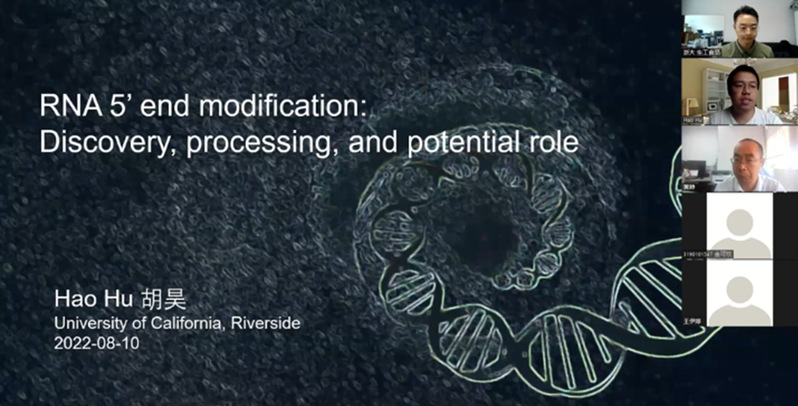
August 10, 2022, Dr. Hu Hao from the team of Prof. Chen Xuemei (NAS fellow) from the University of California, Riverside was invited to conduct an academic report entitled "RNA 5'end modification: Discovery, processing, and potential role".
Dr. Hu Hao is currently a postdoc fellow in Chen lab. Hu received his BS and doctor degrees in Huazhong Agriculture University. Hu discovered that the first generation NAD captureSeq performed deficiencies in maintaining of NAD capped RNA (NAD-RNA) full length, false positive and overestimated expression. Hu established a Click Chemistry-based, copper-free method for enrichment of NAD-RNA and a SPAAC-seq method for NAD-RNA high-throughput sequencing. Referring against input mRNA, Hu applied SPAAC-seq to re-sequence and re-identify Arabidopsis NAD-RNA (PNAS, 118, e2025595118).
The report was hosted by Prof. Luo Zisheng and graduated student Ma Quan. The meeting invited investigators from College of Life Sciences, College of Environmental & Resource Sciences Resources and Environment, College of Agriculture & Biotechnology.
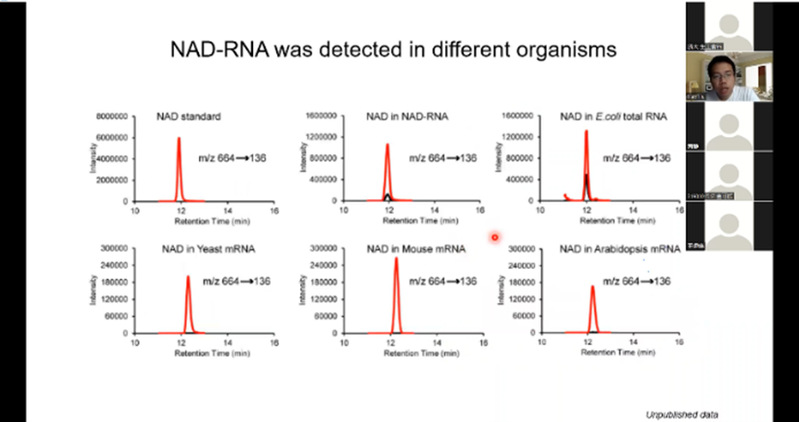
With the large-scale application of high-throughput biochemical data such as omics research and the mechanisms such as transcription regulation, the collection of fresh fruit biochemical data has become more and more simple and feasible, and the biochemical data related to the quality of fresh agricultural products continue to show explosive growth.
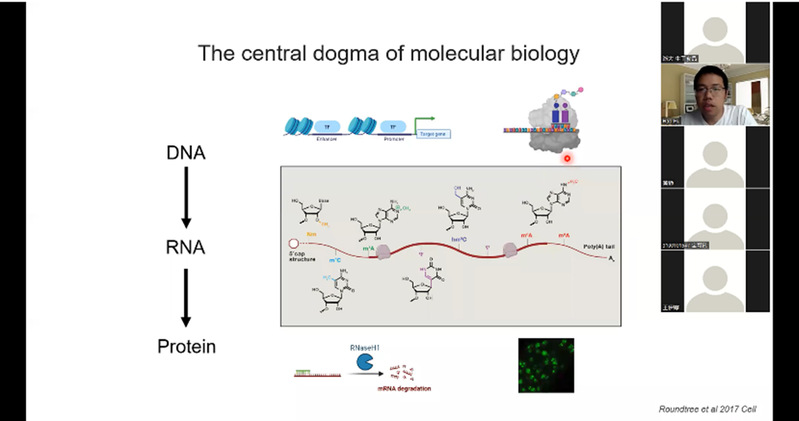
The modification of RNA species contributes to diverse biological processes by regulating gene expression. For messenger RNAs (mRNAs) in eukaryotes, one of the most predominant modifications is the 5′ m7G cap. Extensive studies over the past decades have revealed its wide-reaching roles in the life of an mRNA, such as transcript stability, polyadenylation, pre-mRNA splicing, mRNA export, and translation initiation. In prokaryotes, it was long believed that RNAs contain a triphosphate at the 5′ end. Recently, this view was modified by the detection of nicotinamide adenine dinucleotide (NAD+), a redox cofactor, at the 5′ end of prokaryotic RNAs by high-performance liquid chromatography coupled to mass-spectrometry (HPLC-MS). Being an ATP analog, NAD+ is used by RNA polymerases for incorporation into the RNA 5′ end.
Dr. Hao reported published results and part of unpublished results including the translational capacity, tissue-specific distribution of NAD capped RNA in Arabidopsis thaliana.
September 16, 2022, Prof. Charles Davis from Harvard University gave a report about "Genomic research and climate change investigations using herbarium specimens."
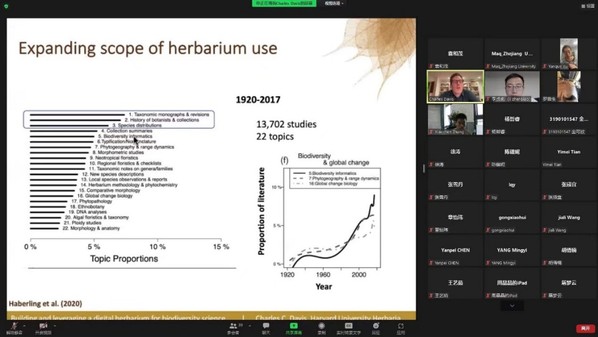
Recent two decades, with the development of molecular biochemical technology for the analysis of physiological indicators of fresh food and the rise of related scientific research, a considerable amount of quality related molecular biological data has been accumulated for food deterioration, including key metabolites, key genes and key proteins. High throughput omics data processing has gradually integrated into various fields with its outstanding characteristics of efficient and accurate information processing. If modern biochemical technology is used in combination with high-throughput data analysis methods to deeply explore the molecular mechanism of food fission, and an intelligent system that can objectively, quickly and accurately predict the shelf life of fresh food is developed, so as to achieve intelligent, safe and controllable quality risk assessment and prediction of fresh agricultural products. It is of great significance to promote the reduction strategy of agricultural product loss and the health strategy to ensure the safety of fresh agricultural product consumption while significantly reducing its waste.
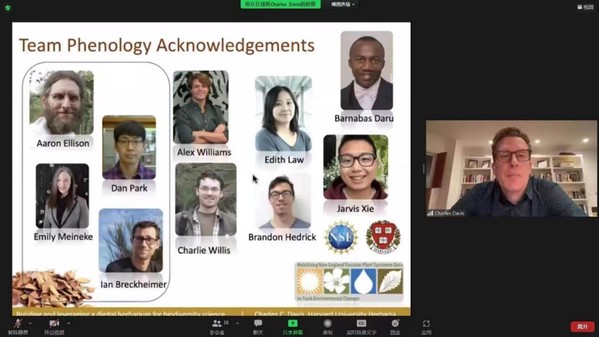
Prof. Charles team has a wide interest in the origin and maintenance of plant diversity across time and space. Climate change, systematic genomics, biogeography, evolution and symbiosis of biological communities are the key areas of his team’s research. Typical breakthrough areas include: using artificial intelligence methods such as deep learning to study the phenological response of temperate and tropical groups to climate change based on a large number of digital museum plant samples; using genomic tools to study plant molecular evolution, including whole genome replication, deep fusion, horizontal gene transfer and hybridization; The origin and evolution of biological communities were studied by means of biogeography; And to study the comparison and development methods of various symbiotic relationships (plant pollinator reciprocity, host parasite interaction).
During the implementation of the Graduate International Summer School/International Workshop Project, the University of California Riverside and Harvard University have made adequate preparations in the early academic cooperation, publicity, mid-term implementation, summary and sustainable development, with the maximum number of online people exceeding 200. At the same time, a number of Zhejiang University teachers have been invited as special guests as well. The participation of teachers and students is extremely appreciable. This project has improved the academic constitution and international perspective of Zhejiang University’s graduate students, and has also contributed to the development of friendly academic relations between China and abroad.